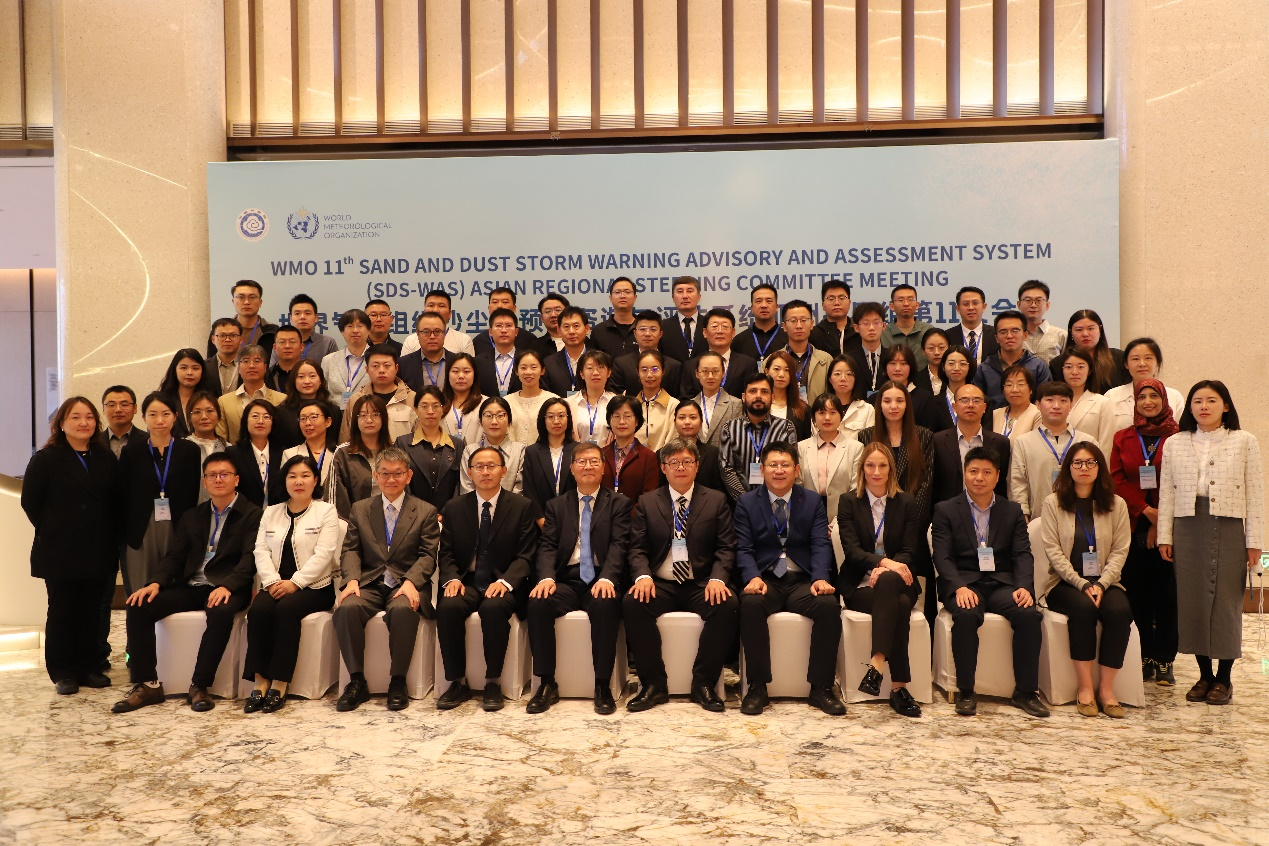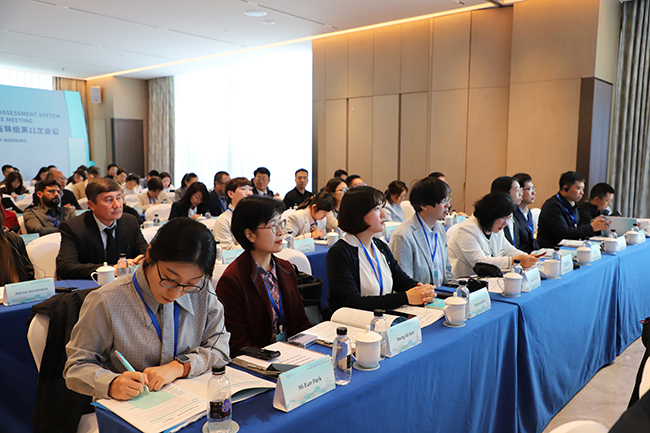REGIONAL SPECIALIZED METEOROLOGICAL CENTER (BEIJING) FOR ATMOSPHERIC SAND AND DUST STORM FORECASTING
(RSMC-ASDF BEIJING)
SAND AND DUST STORM WARNING ADVISORY AND ASSESSMENT SYSTEM ASIAN REGIONAL CENTER
(SDS-WAS ASIAN-RC)
Source: China Meteorological News Press
The World Meteorological Organization (WMO) 11th Sand and Dust Storm Warning Advisory and Assessment System (SDS-WAS) Asian Regional Steering Committee Meeting, namely International Workshop on SDS Early Warning is held Ordos, Inner Mongolia, China from September 23 to 25.
Representatives from global organizations like WMO and 15 countries and territories like China, Japan, Republic of Korea, Mongolia, Kazakhstan, and Uzbekistan, gathered to discuss the latest advancements in sandstorm and dust storm monitoring and early warning technologies, as well as explore new pathways for international cooperation.
This event is hosted by the China Meteorological Administration (CMA) and WMO, and co-sponsored by National Meteorological Centre, Chinese Academy of Meteorological Sciences and Inner Mongolia Autonomous Region Meteorological Service.

Group Photo by Hu Yue
Mr. Ayman Ghulam, President of WMO RA II, Chairman of the Meteorological and Climatological Committee of the League of Arab States, and Director-General of the Saudi Arabia General Authority of Meteorology and Environmental Protection pointed out that the SDS-WAS and the Regional Specialized Meteorological Centre in Beijing (ASDF-Beijing) have played a leading role in turning science into services. Their advanced forecasting tools have saved lives and reduced losses in many countries. Looking ahead, there are great opportunities to connect SDS-WAS activities more closely with WMO RA II priorities in our Regional Operating Plan. I encourage you to participate actively, share experiences openly, and work together to overcome the technical and practical challenges ahead.
Sara Basart from WMO Secretariat said that “I would like to convey the greetings of the Secretary General of the World Methodological Organization, the Professor Celeste Saulo, and her wishes for you to have a successful meeting.Today's meeting offers us a valuable opportunity to share knowledge, to learn from regional experiences, and to identify practical ways forward. I'm confident that our discussions will be constructive and that together we will advance on solutions that make a real difference.”
Ana Vukovic Vimic, co-chair of the SDS-WAS Global Steering Committee, hopes that experts and scholars will promote the scientific implementation plan of SDS-WAS in the next phase, strengthen cooperation among different nodes, make positive contributions to the United Nations Framework Convention on Climate Change, and jointly establish an effective sandstorm early warning system.
Takashi Maki, the Chair of the SDS-WAS Asian Node, stated that SDS-WAS has achieved remarkable results over the years of its operation, and the Asian Node has also become one of the globally leading nodes. He hoped that the?representatives?would share knowledge, facilitate exchanges, and jointly promote pragmatic cooperation in the future.
During the events, participants engaged in fruitful exchanges and discussions on the latest advances and achievements in multi-source dust storm observation, numerical weather prediction modeling development, artificial intelligence (AI) applications, and early warning system construction.

During the event Photoed by HU Yue
During a field trip to Inner Mongolia's demonstration zone for sand prevention and control, the representatives saw first-hand China's successful efforts in ecological restoration and dust source management.
RSMC-ASDF Beijing was approved by the WMO in May 2017 and is operated by the CMA. The portal has recorded 2.3 million page views so far in 2025, with its services covering over 50 countries worldwide. It has now become one of the critical information platforms for global sand and dust storm warnings.
Editor: LIU Shuqiao